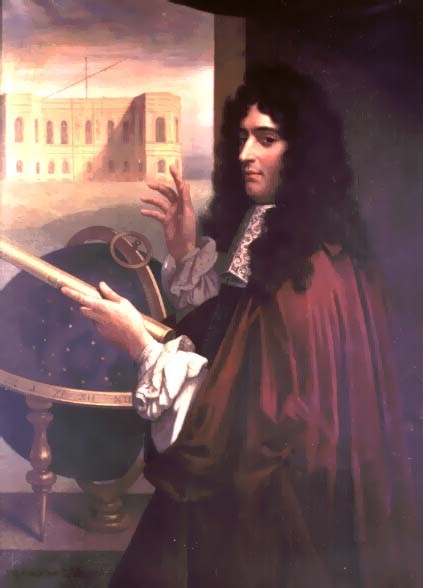<Back to Index>
- Astronomer Giovanni Domenico Cassini, 1625
- Composer Robert Schumann, 1810
- Admiral David Dixon Porter, 1813
PAGE SPONSOR

Giovanni Domenico Cassini (June 8, 1625 – September 14, 1712) was an Italian/French mathematician, astronomer, engineer, and astrologer. Cassini, also known as Giandomenico Cassini or Jean-Dominique Cassini, was born in Perinaldo, near Sanremo, at that time in the Republic of Genova.
Cassini was an astronomer at the Panzano Observatory, from 1648 to 1669. He was a professor of astronomy at the University of Bologna and became, in 1671, director of the Paris Observatory. He thoroughly adopted his new country, to the extent that he became interchangeably known as Jean-Dominique Cassini — although that is also the name of his great-grandson.
Cassini was the first to observe four of Saturn's moons, which he called Sidera Lodoicea, including Iapetus, whose anomalous variations in brightness he correctly ascribed as being due to the presence of dark matter on one hemisphere (now called Cassini regio in his honour). In addition he discovered the Cassini Division in the rings of Saturn (1675). He shares with Robert Hooke credit for the discovery of the Great Red Spot on Jupiter (ca. 1665). Around 1690, Cassini was the first to observe differential rotation within Jupiter's atmosphere.
In 1672 he sent his colleague Jean Richer to Cayenne, French Guiana, while he himself stayed in Paris. The two made simultaneous observations of Mars and, by computing the parallax, determined its distance, thus measuring for the first time the true dimensions of the solar system.
Cassini was the first to make successful measurements of longitude by the method suggested by Galileo, using eclipses of the satellites of Jupiter as a clock. Attracted to the heavens in his youth, his first interest was in astrology.
While young he read widely on the subject of astrology, and soon was
very knowledgeable about it; this extensive knowledge of astrology led
to his first appointment as an astronomer. Later in life he focused
almost exclusively on astronomy and all but denounced astrology as he became increasingly involved in the Scientific Revolution. In 1645 the Marquis Cornelio Malvasia, a senator of Bologna with
a great interest in astrology, invited Cassini to Bologna and offered
him a position in the Panzano Observatory, which he was constructing at
that time. Most of their time was spent calculating newer, better, and
more accurate ephemerides for astrological purposes using the rapidly advancing astronomical methods and tools of the day. In 1669 Cassini moved to France and through a grant from Louis XIV of France helped to set up the Paris Observatory,
which opened in 1671; Cassini would remain the director of the
observatory for the rest of his career until his death in 1712. In 1673
he became a French citizen. For the remaining forty-one years of his
life Cassini served as astronomer/astrologer to Louis XIV ("The
Sun King"); serving the expected dual role yet focusing the
overwhelming majority of his time on astronomy rather than the
astrology he had studied so much in his youth. During
this time, Cassini's method of determining longitude was used to
measure the size of France accurately for the first time. The country
turned out to be considerably smaller than expected, and the king
quipped that Cassini had taken more of his kingdom from him than he had
won in all his wars. Cassini became blind in 1711. Cassini was employed by Pope Clement IX in regard to fortifications, river management, and flooding of the Po River. The Pope asked Cassini to take Holy Orders to work with him permanently but Cassini turned him down because he wanted to work on astronomy full time. In the 1670s, Cassini began work on a project to create a topographic map of France, using Gemma Frisius's technique of triangulation. The project was continued by his son Jacques Cassini and eventually finished by his grandson César-François Cassini de Thury and published as the Carte de Cassini in 1789 or 1793. It was the first topographic map of an entire country.